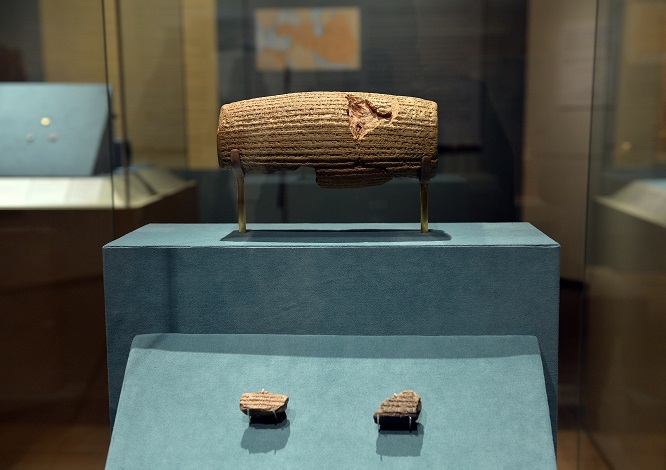Si intitola “Prima dell’alfabeto. Viaggio in Mesopotamia alle origini della scrittura” la mostra dedicata appunto alle origini della scrittura, da quella cuneiforme ai geroglifici. L’esposizione, allestita presso Palazzo Loredan, sede dell’Istituto Veneto di Scienze, Lettere ed Arti, a Venezia, è stata organizzata dalla Fondazione Giancarlo Ligabue.
Dal 20 gennaio fino al 25 aprile 2017, la mostra espone circa 200 opere, tra le quali spiccano antichissime tavolette e straordinari sigilli risalenti a 5 mila anni fa. Un viaggio attraverso la grande civiltà dell’Antica Mesopotamia, territorio ora reso inaccessibile a causa dei conflitti bellici.
Le opere provengono inoltre dall’Archeologico di Venezia e dal Museo di Antichità di Torino, ed e composta, oltre che da reperti, anche da apparati multimediali, banner, touch screen, laboratori per bambini e testimonianze delle esplorazioni nel XIX secolo di Paul Emile Botta e Austen Henry Layard, illustrando un nodo cruciale dell’evoluzione umana, quello appunto della nascita della scrittura, avvenuta quasi contemporaneamente in Egitto e in Mesopotamia verso il 3200 a.C.

 The Cyrus Cylinder, Achaemenid, 539-538 B.C., excavated at Babylon, Iraq, 1879, on display with fragments of table with Babylonia cuneiform inscription (bottom), Achaemenid, 539-538 B.C. in "The Cyrus Cylinder and Ancient Persia: Charting a New Empire" June 20, 2013 at The Metropolitan Museum of Art in New York. The Cyrus Cylinder is a 2,600-year-old inscribed clay document from Babylon in ancient Iraq and one of the most famous surviving icons from the ancient world is part of a traveling exhibition organized by the British Museum. The Cylinder marks the establishment of Persian rule in 539 B.C. by Cyrus the Great, with the defeat of Babylon, the restoration of shrines, and the return of deported peoples and their gods. The Cyrus Cylinder and 16 related works on view, all on loan from the British Museum, reflect the innovations initiated by Persian rule in the ancient Near East (550331 B.C.) and chart a new path for this empire, the largest the world had known. AFP PHOTO/Stan HONDA (Photo credit should read STAN HONDA/AFP/Getty Images)
The Cyrus Cylinder, Achaemenid, 539-538 B.C., excavated at Babylon, Iraq, 1879, on display with fragments of table with Babylonia cuneiform inscription (bottom), Achaemenid, 539-538 B.C. in "The Cyrus Cylinder and Ancient Persia: Charting a New Empire" June 20, 2013 at The Metropolitan Museum of Art in New York. The Cyrus Cylinder is a 2,600-year-old inscribed clay document from Babylon in ancient Iraq and one of the most famous surviving icons from the ancient world is part of a traveling exhibition organized by the British Museum. The Cylinder marks the establishment of Persian rule in 539 B.C. by Cyrus the Great, with the defeat of Babylon, the restoration of shrines, and the return of deported peoples and their gods. The Cyrus Cylinder and 16 related works on view, all on loan from the British Museum, reflect the innovations initiated by Persian rule in the ancient Near East (550331 B.C.) and chart a new path for this empire, the largest the world had known. AFP PHOTO/Stan HONDA (Photo credit should read STAN HONDA/AFP/Getty Images)












